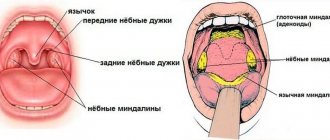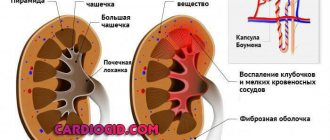Streptococcus viridans is part of the natural human microflora. The microbe lives on the mucous membrane of the respiratory, digestive and urogenital tracts. Normally, its amount should not exceed 30% of the number of all microorganisms inhabiting these loci.
Bacteria are ubiquitous. In their normal state they are not dangerous to humans. Suppression of immune defense is the reason for the active reproduction of Streptococcus viridans and its acquisition of pathogenic properties. The microbe causes local inflammation and destruction of the cells of the mucous membrane lining the respiratory, digestive and urinary organs. Over time, the pathogenic streptococcus leaves its “territory”. It penetrates the blood and spreads throughout the body, causing severe illnesses that lead to disability of patients and even death.
Streptococcus viridans means green in Latin. This name is associated with the ability of bacteria to produce a green color during hemolysis. A microbe can be detected in biological material using bacteriological testing or PCR. Treatment of infection is etiotropic, pathogenetic, symptomatic. Patients are prescribed penicillins, immunomodulators and drugs that eliminate clinical manifestations and improve the general condition of patients.
Etiology
Streptococcus viridans under a microscope
Streptococcus viridans are asporogenous spherical or ovoid cocci lacking flagella. They form a capsule that protects them from phagocytes, and under certain conditions they transform into the L-form, which allows them to hide from components of the immune system.
The bacteria are Gram stained blue and are arranged in chains in the smear. They are very picky about growth conditions. For inoculation, media with blood or serum are used - blood or serum agar. On solid nutrient media, very small, grayish colonies grow with a zone of green hemolysis along the periphery. In liquid media they form diffuse turbidity with sediment at the bottom.
Streptococci are able to carry out their life processes both in the presence of oxygen and without it. The bacteria are resistant to optochin and insoluble in bile. Streptococcus viridans is resistant to some environmental factors - drying, heating, cooling, freezing. Microbes die during boiling and disinfection, but not immediately, but after 15-30 minutes. Being in the external environment for a long time, they lose their pathogenicity.
Streptococcus viridans is considered a weakly virulent microbe. This is due to a limited set of pathogenicity factors, which include the capsule, adhesin proteins, endotoxin, hemolysins and enzymes that ensure the development of the pathological process.
Epidemiology
Streptococcus viridans in a certain concentration is not dangerous to humans. Rather, on the contrary, bacteria prevent the invasion of other pathogens and protect the human body from dangerous microbes such as Pseudomonas.
When the number of streptococci begins to grow rapidly, pathology occurs. Replenishment of streptococcus is also possible from the outside - from sick people, especially with respiratory forms of the disease, as well as from asymptomatic bacteria carriers. Patients with respiratory disease constantly release microbes into the environment.
Sources of infection can be your own foci - inflamed sinuses or carious teeth. Mucus from the nose, flowing down the back wall of the throat, periodically causes inflammation of the throat and tonsils.
Ways of spread of infection:
- Aeration - when swallowing air containing microbes,
- Contact, including sexual - with a kiss, hug, coitus,
- Nutritional - when consuming infected food products: eggs, milk, ham,
- Transplacental - intrauterine infection of the fetus.
People's susceptibility to streptococcal infection is quite high. The disease is characterized by autumn-winter seasonality. The microbe primarily affects young children and the elderly.
Factors contributing to the development of pathology:
- Immunodeficiency,
- Post-acute ARVI,
- Hypothermia,
- Contact with a sick person
- Oncopathology,
- Long-term immunosuppression
- Concomitant chronic diseases in the stage of decompensation.
After the introduction of Streptococcus viridans into the human body, local inflammatory processes develop and the primary lesion forms. This microbe has a tropism for the epithelium of the respiratory tract, so most often the place of its localization is the upper respiratory tract. In more rare cases, the organs of the urinary and digestive systems become inflamed. Bacteria actively multiply in epithelial cells. When their number becomes prohibitive, streptococci break into the bloodstream and spread to the internal organs.
Streptococcus viridans can cause severe intoxication with dyspepsia and confusion. The cell wall of bacteria is perceived by the body as an allergen, to which autoantibodies and hypersensitivity are produced. Allergization of the body occurs, autoimmune processes develop in the form of glomerulonephritis, myocarditis, and rheumatism. Despite its low virulence, Streptococcus viridans is able to penetrate through the bloodstream even into sterile environments - cerebrospinal fluid, urine.
Diseases caused by Streptococcus viridans:
- Demineralization and destruction of hard tooth tissues with the formation of a cavity defect,
- Inflammation of periodontal tissues,
- Tonsillitis, pharyngitis,
- Otitis,
- Inflammation of the renal glomeruli,
- Urethritis,
- Cervicitis,
- Inflammation of lymph nodes, muscles, skin,
- Endocarditis.
Streptococcus (streptococci)
Streptococci
(lat.
Streptococcus
) is a genus of gram-positive facultative anaerobic bacteria.
Spherical cells with a diameter of less than 2 microns are arranged in pairs or in chains. The vast majority of strains are immobile. Among streptococci there are causative agents of various human diseases, and representatives of normal microflora that live in the oral cavity, gastrointestinal tract, genitourinary and respiratory tract, and strains widely used in the food and pharmaceutical industries. Streptococci are detected in the stomach of 55.5% of healthy people in an amount of 4 lg CFU/g (Zimmerman Ya.S.). Streptococcus spp.
(among them
S. mitis
and
S. parasanguinis
) are the most common bacteria in the microbiota (along with lactobacilli, veillonella and prevotella) in patients with stomach cancer (Starostin B.D.). Streptococci are found in the baby's gastrointestinal tract a few hours after birth. Colonization of the gastrointestinal tract with streptococci occurs during its birth, when the newborn passes through the mother’s birth canal (Khavkin A.I. et al.).
Within the genus, streptococci are classified according to various characteristics, in particular by the type of hemolysis, by serological properties, etc. There is no absolutely unambiguous correspondence between species and serological groups.
Streptococci are associated with bronchial asthma, multiple sclerosis; titers of streptococci decrease in Crohn's disease and increase in colorectal cancer ( Streptococcus bovis
), atrophic gastritis, stomach cancer;
Streptococcus pneumoniae
is associated with adenocarcinoma of the esophagus (Karpeeva Yu.S. et al.).
Classification of streptococci by type of hemolysis
| Pharyngitis caused by streptococcus |
According to the type of erythrocyte lysis determined on blood media, streptococci are divided into the following types:
- α-hemolytic (greening), causing partial hemolysis
- β-hemolytic, causing complete hemolysis
- γ-hemolytic (non-hemolytic), not causing hemolysis
Alpha-hemolytic streptococci
, in particular, include :
- one of the most clinically important pathogens, the causative agent of pneumonia, meningitis and other diseases Streptococcus pneumoniae
- widely used in the preparation of various dairy products, including yogurt, fermented baked milk, varentsy, sour cream, mozzarella and other cheeses, as well as the species Streptococcus thermophilus
- so-called “greening” streptococci: Streptococcus salivarius, Streptococcus mutans, Streptococcus sanguis, Streptococcus mitis
and others.
They are low-virulent and can be part of the normal microflora of the oral cavity, living on the teeth and gums. Some streptococci from this group can cause or contribute to the occurrence of caries (Novikova V.P., Shabalov A.M., Smirnova M.A.), in particular, Streptococcus mutans
. The peculiarity of such streptococci is their transmission from person to person. most often to the child from the mother or other family members. Viridinaceous streptococci are the main cause of infective endocarditis.
| Schematic representation of the cell structure of the beta-hemolytic streptococcus Streptococcus pyogenes, surface and secreted virulence factors (Shpynev K.V. et al.) |
Beta-hemolytic streptococci
according to the classification of R. Lancefield are divided into serogroups A, B ... U in accordance with the structure of carbohydrate C cell wall. Beta-hemolytic streptococci include:
- serogroup A
, or
GAS
: the main representative is the pathogenic streptococcus
Streptococcus pyogenes
, which causes a wide range of invasive and non-invasive human diseases, in particular scarlet fever, phagingitis, tonsillitis;
Some strains of S. dysgalactiae subsp.
equisimilis and
Streptococcus agalactiae anginosus - serogroup B
, or
GBS
:
Streptococcus agalactiae
- streptococcus, found in some individuals as part of the normal intestinal microflora, in 20-30% of healthy women - in the urogenital tract; may cause serious infections in newborns and women in labor - serogroup C
(
GCS
includes mainly streptococci that cause diseases in animals, in particular,
Streptococcus equi
(mystery streptococcus) - the causative agent of acute respiratory disease in horses,
Streptococcus equi subsp.
zooepidemicus - pathogen of mammalian diseases and others - the most important members of serogroup D
(
GDS
) have been reclassified as enterococci
Publications for healthcare professionals addressing the role of streptococci in dental disease
- Novikova V.P., Shabalov AM The condition of the oral cavity in patients with gastroesophageal reflux disease (GERD) // Gastroenterology of St. Petersburg. – 2009. – No. 1. - With. 25–28.
- Smirnova M.A. Patterns of development, principles of complex treatment and prevention of caries of contact surfaces of teeth. Abstract of dissertation. Doctor of Medical Sciences, 14.00.21 - dentistry. TGMA, Tver, 2009.
- Aivazova R.A. Clinical diagnostic criteria and evaluation of the effectiveness of treatment of inflammatory periodontal diseases in patients with acid-dependent pathology of the gastrointestinal tract. Abstract of dissertation. Doctor of Medical Sciences, 01/14/14 – dentistry, 01/14/04 – ext. diseases. MGMSU, Moscow, 2021.
On the website gastroscan.ru in the literature catalog there is a section “Diseases of the oral cavity associated with diseases of the gastrointestinal tract.”
Lactic acid streptococci
A number of steptococci are capable of fermenting dairy products; they are widely used in the dairy and cheese industries, in particular in the preparation of lactic acid products and cheeses. The term “lactic acid streptococci” is very often extended not only to representatives of the genus Streptococcus
, but also to
Lactococcus
, also part of the family of streptococci (lat.
Streptococcaceae
) and the genus
Leuconostoc
from the family
Leuconostocaceae
. When describing lactic acid streptococci, the names of bacteria often differ from those accepted in microbiology.
| Lactic acid Streptococcus thermophilus is used in the preparation of fermented baked milk and other products |
In relation to temperature, lactic acid streptococci are divided into mesophilic and thermophilic. In mesophilic species, the optimal temperature is 25-30 °C. The minimum development temperature for mesophilic lactic acid bacteria is 10 °C. Mesophilic lactic acid streptococci include acid formers: Streptococcus lactis, Lactococcus lactis subsp.
cremoris (formerly called
Streptococcus cremoris
) and aromatic streptococci:
Lactococcus lactis subsp.
lactis (old name
Streptococcus diacetilactis
),
Streptococcus acetoinicus, Streptococcus paracitrovorus
(
Leuconostoc citrovorum
),
Streptococcus citrovorus
(
Leuconostoc citrovorum
). Flavor-forming bacteria release increased amounts of volatile acids (acetic and propionic) and aromatic substances (esters, diacetyl) into dairy products. Mesophilic lactic acid streptococci provide active acid formation and clot formation. Their quantity in the finished product reaches 109 CFU per 1 cm3. These microorganisms are constantly present in kefir grains and kefir, accounting for up to 60% of the total microflora of kefir.
Compared to mesophilic bacteria, thermophilic ones develop better at elevated temperatures (38-45°C, minimum - 20-22°C, maximum - 45-50°C) and ferment sucrose. Thermophilic streptococci include Streptococcus thermophilus
.
Streptococci in the taxonomy of bacteria
According to modern concepts, the genus streptococcus ( Streptococcus
) is included in the family
Streptococcaceae
, order
Lactobacillales
, class
Bacilli
, phylum
Firmicutes
, <group without rank>
Terrabacteria group
, kingdom Bacteria.
In the genus Streptococcus
includes the following species:
S. acidominimus, S. agalactiae, S. alactolyticus, S. anthracis, S. australis, S. azizii, S. B-6, S. bovimastitidis, S. caballi, S. cameli, S. canis, S. caprae, S. castoreus, S. caviae, S. criae, S. criceti, S. cristatus, S. cuniculi, S. danieliae, S. dentapri, S. dentasini, S. dentiloxodontae, S. dentirousetti,, S dentisuis, S. devriesei, S. didelphis, S. downei, S. entericus, S. equinus, S. ferus, S. fryi, S. gallinaceus, S. gallolyticus, S. gordonii, S. halichoeri, S. henryi , S. himalayensis, S. hongkongensis, S. hyointestinalis, S. hyovaginalis, S. ictaluri, S. infantarius, S. infantis, S. iniae, S. lactarius, S. loxodontisalivarius, S. lutetiensis, S. macacae, S Macedonicus, S. marimammalium, S. marmotae, S. massiliensis, S. merionis, S. milleri, S. minor, S. mitis, S. moroccensis, S. mutans, S. oralis, S. oricebi, S. oriloxodontae , S. orisasini, S. orisratti, S. orisuis, S. ovis, S. ovuberis, S. panodentis, S. pantholopis, S. parasanguinis, S. parasuis, S. parauberis, S. pasteuri, S. pasteurianus, S peroris, S. pharyngis, S. phocae, S. pluranimalium, S. plurextorum, S. pneumoniae, S. porci, S. porcinus, S. porcorum, S. pseudopneumoniae, S. pseudoporcinus, S. pyogenes, S. ratti , S. rifensis, S. rubneri, S. ruminantium, S. rupicaprae, S. salivarius, S. saliviloxodontae, S. sanguinis, S. sciuri, S. seminale, S. sinensis, S. sobrinus, S. suis, S tangierensis, S. thermophilus, S. thoraltensis, S. timonensis, S. troglodytae, S. troglodytidis, S. uberis, S. urinalis, S. ursoris, S. varani, S. vestibularis, S. viridans,
as well as groups species:
S. anginosus, S. dysgalactiae
.
To the group Streptococcus anginosus
species included:
S. anginosus, S. constellatus, S. intermedius.
To the group Streptococcus dysgalactiae - S. dysgalactiae
and
S. equi
.
The species Streptococcus equi
has subspecies:
Streptococcus equi subsp.
equi, Streptococcus equi subsp. ruminatorum, Streptococcus equi subsp. zooepidemicus .
Some strains of Streptococcus equi subsp. zooepidemicus
and
Streptococcus equi subsp.
equi are producers of hyaluronic acid and are used as such in the pharmaceutical industry.
Previously, group D streptococci included species that were later transferred to the genus Enterococcus. Specifically, Enterococcus faecalis
was called
Streptococcus faecalis, Enterococcus faecium
was called
Streptococcus faecium
.
Streptococcus lactis species widely used in the dairy and cheese industries
, as well as previously related to streptococci
Streptococcus plantarum, Streptococcus raffinolactis
have been reclassified into
Lactococcus lactis, Lactococcus plantarum
and
Lactococcus raffinolactis
.
Streptococci and diseases caused by streptococci in ICD-10
Streptococci and streptococcal-related diseases are mentioned in the International Classification of Diseases ICD-10 in a significant number of sections, in particular in:
- "Class I. Certain infectious and parasitic diseases (A00-B99)", in blocks:
- “A30-A49 Other bacterial diseases”, in the categories:
- A40 Streptococcal septicemia
- A40.0 Septicemia caused by group A streptococcus
- A40.1 Septicemia due to group B streptococcus
- A40.2 Septicemia due to group D streptococcus
- A40.3 Septicemia caused by Streptococcus pneumoniae
. Pneumococcal septicemia - A40.8 Other streptococcal septicemias
- A40.9 Streptococcal septicemia, unspecified
- A49.1 Streptococcal infection, unspecified
- B95.0 Group A streptococci as a cause of diseases classified elsewhere
- B95.1 Group B Streptococcus as a cause of diseases classified elsewhere
- B95.2 Group D streptococci as a cause of diseases classified elsewhere
- B95.3 Streptococcus pneumoniae
as a cause of diseases classified elsewhere - B95.4 Other streptococci as a cause of diseases classified elsewhere
- B95.5 Unspecified streptococci as a cause of diseases classified elsewhere
- “J10-J18 Flu and pneumonia”, in the categories:
- J15.3 Pneumonia due to group B streptococcus
- J15.4 Pneumonia caused by other streptococci
- “P35-P39 Infectious diseases specific to the perinatal period”, in the headings:
- P36.0 Neonatal sepsis due to group B streptococcus
- P36.1 Sepsis of the newborn due to other and unspecified streptococci
- P36.2 Sepsis of the newborn due to
Staphylococcus aureus - P36.3 Sepsis of the newborn due to other and unspecified staphylococci
Back to section
Symptoms
Streptococcus viridans usually causes diseases of the upper respiratory tract. In a child, this microbe is found in the throat and becomes the causative agent of pharyngitis or sore throat. Against the background of a pronounced intoxication syndrome with fever, malaise and apathy, a sore throat, nausea, and hoarseness appears. Sick children are often capricious, cry, refuse to eat, and do not breastfeed. They develop yellow-green nasal discharge, cough, and headache.
Upon examination, specialists detect hyperemic mucous membrane of the pharynx, swelling and hypertrophy of the tonsils. In patients, the face becomes puffy, regional lymphadenitis occurs, a pustular rash appears on the skin, myalgia, arthralgia, hyperhidrosis.
Complications of diseases caused by Streptococcus viridans:
- Acute otitis media,
- Rheumatism,
- Myocardial inflammation
- Glomerulonephritis,
- Bacterial inflammation of the meninges,
- Abscesses of parenchymal organs,
- Sepsis,
- Shock.
The pathogenesis of such complications is not fully known. Their cause is considered to be autoimmune inflammation: antibodies produced to fight infection react to their own cells affected by streptococcus.
Beta hemolytic streptococcus: main diseases
GABHS (group A beta hemolytic streptococcus) can cause a wide variety of diseases. That is why hemolytic streptococcus is considered the most dangerous virus for humans. Group A beta hemolytic streptococcus can cause:
- tonsillitis;
- pharyngitis;
- scarlet fever;
- erysipelas;
- paratonsillar abscess;
- phlegmon of the neck;
- sepsis;
- otitis;
- meningitis;
- fasciitis and myositis;
- streptoderma;
- rheumatism;
- glomerulonephritis.
Laboratory research methods
Diagnosis of diseases caused by Streptococcus viridans involves conducting a microbiological examination of clinical material and performing a polymerase chain reaction. Laboratory diagnostics begins with the selection of material. Microbiologists examine a swab from the throat and tonsils, nasal discharge, vaginal secretions, scrapings from the affected area of the skin, blood, urine, sputum, and cerebrospinal fluid.
Bacteriological examination is a “classic” in the diagnosis of infectious diseases. The selected material in sterile tubes or containers is delivered to a microbiological laboratory for pathogen isolation. It is inoculated on blood agar and one of the accumulation media - sugar or whey broth. After daily incubation, the results are taken into account. Microscopy of grown colonies reveals blue cocci arranged in chains. Of particular interest are colonies with a zone of greening hemolysis. They contain pathogenic microorganisms. Colonies with hemolysis are counted and the degree of microbial contamination is determined. After identifying the biochemical and antigenic properties, a conclusion is made about whether the microbe belongs to the species Streptococcus viridans and its quantity is compared with the maximum permissible. Normally, streptococcus viridans should not exceed 10 to 4 microbial cells. When the number of microorganisms in the pharynx is 10 to 5 degrees or more, they speak of its etiological role in the development of this disease. For clinicians, not only the type and quantity of the pathogen is important, but also its sensitivity to antibacterial drugs. To determine it, a special test is performed with a set of antibiotics from different groups.
PCR diagnostics is a modern method that allows one to detect an infection by isolating the genetic material of the pathogen. This rapid test provides accurate results in minutes. But according to modern standards, patients need to undergo a comprehensive examination, which takes a little longer, but gives a more reliable result. Since Streptococcus viridans is a normal inhabitant of the human body, it can also be detected in healthy people using PCR. That is why this method is not universal.
Additional studies include paraclinical blood and urine tests, ECG, and ultrasound of internal organs. These studies are necessary to determine the condition of the heart and kidneys. Very often, streptococcus spreads hematogenously from foci located in the glomerular formations or the valve apparatus.
Diagnosis and treatment of streptococcal infections
Specific diagnosis of pathogens requires bacteriological analysis of scrapings of mucous membranes, samples of saliva, urine, sputum, purulent discharge and other biomaterials. In addition, blood testing for antibodies to streptococci is often necessary. Laboratory tests determine the type of pathogen within 20–30 minutes.
In addition to etiological tests for various pathologies, diagnosis of the general condition of organ damage is required: examination by an otolaryngologist, ultrasound, fluorography and some others.
Treatment tactics are selected taking into account the identified disorders and resistance of microbes to medications. Therapy is carried out by doctors of various profiles: gynecologists, therapists, pulmonologists, dermatologists. To suppress the activity of infectious microflora, patients are prescribed a course of antibiotics. Azithromycin, Erythromycin, and fluoroquinolone drugs are effective against streptococci: Ciprofloxacin, Levofloxacin. It is important to purchase and use medications as prescribed by a doctor. Self-indulgence in this matter leads to the development of superinfections. Therapy is also supplemented with immunomodulatory agents.
Sanitary measures, hardening, and the use of antiseptics help prevent the development of streptococcal diseases.
General therapeutic measures
Streptococcal infection is dangerous due to its complications, so its treatment should be started immediately. Treatment of infection caused by Streptococcus viridans consists of treating the root cause—the microbe—and eliminating clinical manifestations that worsen the well-being of patients. For this purpose, traditional medicinal and physiotherapeutic methods, as well as traditional medicine, are used. An integrated approach gives the most positive results. On average, a course of medication lasts 7-10 days. Treatment is carried out under the supervision of specialists - ENT doctors, infectious disease specialists or pulmonologists.
Treatment of streptococcal infections requires the use of antibiotics. Patients are prescribed penicillins Augmentin, Amoxicillin and cephalosporins Ceftriaxone and Ceftazidime. Antibiotic therapy is carried out until complete sanitation, after which the patient is retested for microflora.- Gargling with streptococcal bacteriophage, Miramistin, Chlorhexidine.
- Enterosorbents for detoxification – “Polysorb”, “Smecta”.
- To restore the disturbed intestinal microflora, pre- and probiotics are taken - “Linex”, “Acipol”, “Bifidumbacterin”.
- Immunostimulating drugs – “Likopid”, “Bronchomunal”, “Polyoxidonium”.
- Desensitizing agents for relieving swelling - “Tavegil”, “Zirtek”, “Loratodine”.
- Antipyretic and anti-inflammatory drugs - Paracetamol, Nurofen.
- Vasoconstrictor nasal drops - “Tizin”, “Xylometazoline”.
- Detoxification and dehydration consists of drinking a sufficient amount of fluid, taking Regidron orally, and parenterally administering saline and glucose.
- Rinsing the mouth and throat with infusions and decoctions of medicinal herbs.
- Ingestion of natural antiseptics - honey, propolis, garlic, onions.
- Enriching the diet with vitamins – vegetables and fruits.
- Rosehip decoction and cranberry juice saturate the body with vitamin C and increase immunity.
- A decoction of blueberry leaves and berries is a good antiseptic and immunostimulant.
- Treatment of endocarditis is carried out through surgery - microbial vegetations on the valves are removed, the thickened endocardium is excised, and then plastic surgery is performed.
Particular attention should be paid to the care of patients, their nutrition and compliance with the drinking regime.
Preventive procedures
Specific prevention of streptococcal infection has not currently been developed. To prevent the development of pathology, experts give the following recommendations:
- Observe the rules of personal hygiene: regularly wet clean the room, wash your hands before eating, keep household items, dishes, and children's toys clean.
- Temper yourself, lead an active lifestyle, engage in feasible sports.
- Eat nutritiously and properly, include foods enriched with vitamins and microelements in your diet, prepare fresh meals every day, monitor the expiration dates of raw materials and products.
- Fight bad habits, give up excessive and frequent consumption of alcoholic beverages, do not smoke, and avoid passive smoking.
- Timely identify and isolate patients in a hospital for adequate and comprehensive treatment under the supervision of specialists.
Streptococcus viridans can peacefully coexist with people. The development of pathology occurs when immunity decreases or microbes with pathogenic properties penetrate from the outside. In the absence of treatment, streptococcus from its traditional foci - the pharynx and throat - descends into the lower parts of the respiratory tract - the bronchi and lungs, and also penetrates through the bloodstream into other organs. Timely and adequate therapy makes the prognosis of the pathology favorable, preventing life-threatening complications from developing.









